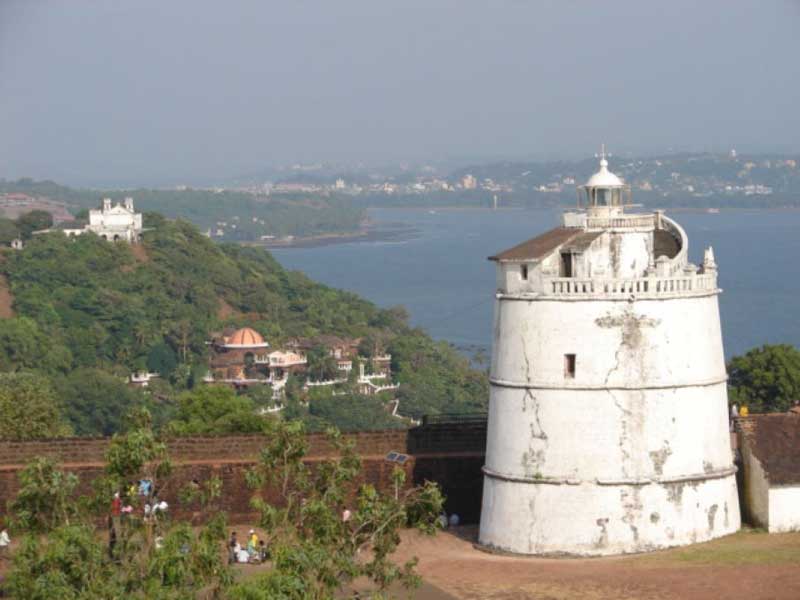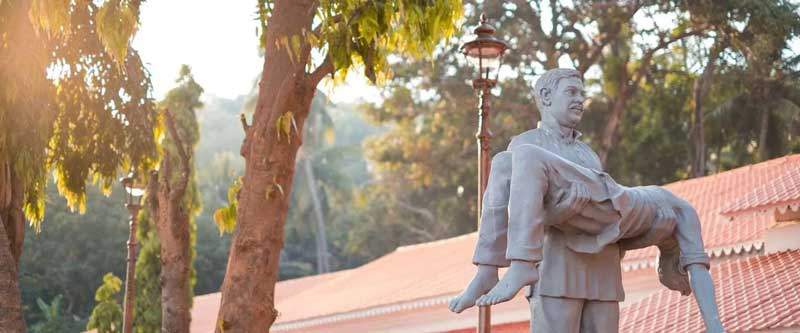
Standing on the Sinquerim Beach in North Goa, approximately 18 km from Panjim, also known as Panaji, the state capital of Goa, Fort Aguada, the 17th-century Portuguese fort, overlooking at the confluence of Mandovi River and the Arabian Sea, covers the entire peninsula at the southwestern tip of Bardez in North Goa.
Constructed in 1612 to guard and defend the Dutch and Maratha invaders, the fort was named after the Portuguese word ‘aguada’, which stands for water, as it has a freshwater spring within its campus, along with an enormous cistern with the capacity of storing around 2,376,000 gallons of water, one of the biggest freshwater storage of the time in whole of Asia, from which even the passing ships used to replenish their freshwater stores. Considered as an epitome of Portuguese military architecture, oldest of its kind in Asia, the fort, with a historical legacy of around 400 years, is one of the most visited attractions in Goa, and is protected by The Archaeological Survey of India as a Monument of National Importance. Despite some crumbling parts, much of the fort still stands intact and is regarded as the best preserved Portuguese fort in India.

Constructed with laterite stone, which is widely available in Goa, and surrounded by massive walls, around 16 feet (5 m) high and 4 feet (1.3 m) thick, with crumbling ramparts on its three sides and a gate facing the river on the fourth side, along with a solitary four-storey lighthouse, offering a stunning view of the sunset, the hilltop fort of Aguada, once the grandstand of 79 cannons, is divided into two segments.
The upper part, designed to serve as a fort, as well as a watering station, is equipped with a moat, gunpowder chamber, lighthouse, along with a secret escape passage for the residents to be used as an emergency exit during the time of war and emergency, while the lower part served as a safe berth for Portuguese ships.

Originally built in 1864 on a hill and located on the west of the fort, the Aguada lighthouse, one of the oldest in Asia, situated between Mormugao peninsula and Calangute beach, initially used oil lamps to emit light once in every seven minutes, which was later upgraded to emit light every thirty seconds. Before the construction of the lighthouse, ships were guided by huge bonfires lit on a hill, named the Hill of Pilots, located above the current site of the Church of Immaculate Conception in Panaji.
Interestingly, the lighthouse once housed an ancient bell, found in the ruins of Saint Augustine monastery in Old Goa, which was later shifted to Our Lady of Immaculate Conception Church in Panaji. Nevertheless, after serving for about a century, the old lighthouse was abandoned and was replaced by a new lighthouse in 1976, built closer to the cliff. The top of the new four-storey lighthouse, accessible by an inbuilt curving staircase, offers a breathtaking view of the sunset.


The infamous Fort Aguada Jail, located at the bottom of the Fort, is renowned for its beautiful panoramic view, apart from its architectural value and historical significance. In fact, a part of the Fort Aguada was converted into the jail by Salazar, the Prime Minister of Portugal from 1943 to 1968, which served as the largest prison in Goa. Eventually it was closed, but has since been refurbished, repurposed and reopened to the public in 2015 as a heritage site. Today, a part of the jail has been converted into a museum, complete with galleries, activity zones, amenity zones and an information centre, showcasing Goa's freedom struggle from the British rule and depicting the sacrifice of the freedom fighters who were imprisoned in the infamous jail. The two statues, depicting a man carrying a body and another of an Indian lady with her hands up in the air, which once used to grace the entrance to the jail, have now shifted inside and placed along the way leading to the Jail Museum. On every 18th June, a ceremony is held near the salutes in memory of the freedom fighters of Goa.